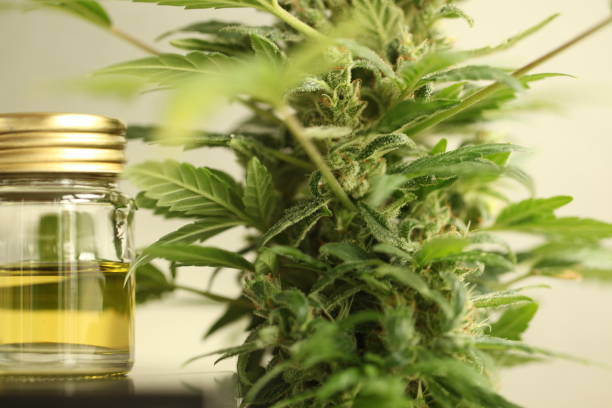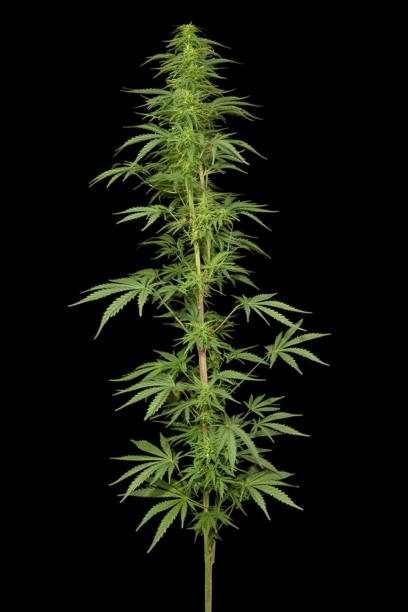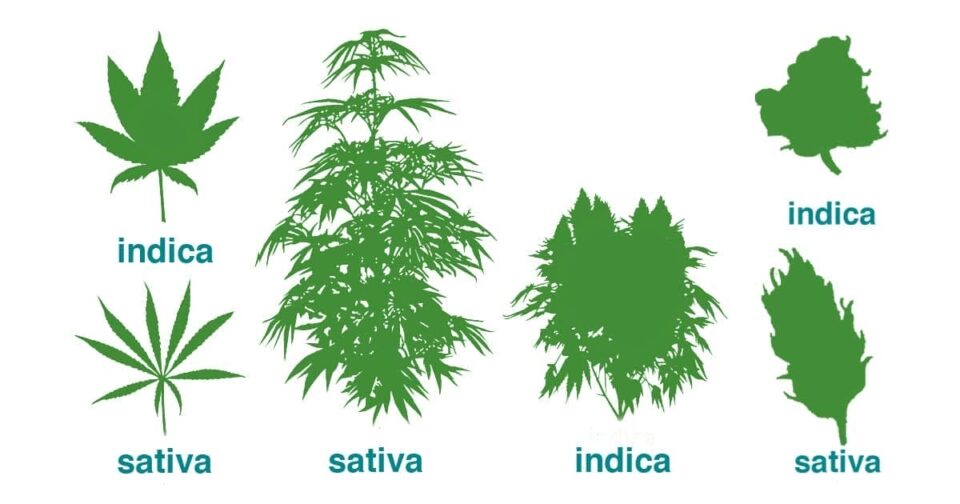⚠️ Medical Disclaimer
Important: This content is for informational and educational purposes only. It should not be used as a substitute for professional medical advice, diagnosis, or treatment. Always consult with a qualified healthcare provider before making changes to your diet, taking supplements, or if you have questions about a medical condition. Never disregard professional medical advice or delay seeking it because of information you read here.
Last Updated on January 25, 2024 by Grace Oluchi
Sativa and Indica have different effects on the mind and body. Thus, making them popular options to people using them for medicinal or recreational purposes.
Marijuana, or cannabis, is a plant that has been in use for medicinal and recreational purposes for centuries. It has its psychoactive effects. It can induce a sense of relaxation, euphoria, and altered perception. However, not all marijuana is equal.
There are two main species of marijuana plants: Cannabis sativa and Cannabis indica. These two strains differ in their physical appearance, chemical composition, and effects on the body and mind. Sativa strains have energizing and uplifting effects, while indica strains have sedation and relaxation effects.
Understanding the differences between these two strains is important for anyone using marijuana for medical or recreational purposes. Sativa and indica strains can have vastly different effects on the body and mind. Choosing the right strain is essential for achieving the desired outcome.
In this article, we will explore the differences between sativa and indica strains of marijuana, as well as their unique effects on the body and mind. Whether you are a seasoned cannabis user or just starting out, this guide will provide valuable information and insights to help you make informed decisions about which strain is right for you. So, read on to discover the fascinating world of sativa vs indica, and how to choose the strain that best suits your needs.
Sativa VS Indica.
Sativa plants are usually tall and thin with narrow leaves.
Indica plants are generally shorter and bushier with broader leaves.
It’s important to remember that individual strains will vary widely in their chemical makeup and effects. In addition,
hybrid strains that combine Sativa and Indica genetics are becoming popular, offering a wider range of effects and healing benefits.
Medicinal benefits.
Sativa strains have medicinal benefits such as original ideas, fallen off anxiety, and better mood. These strains may also be useful in treating conditions such as chronic pain, migraines, and nausea. They’re higher in THC content (psychoactive component of cannabis that produces the “high” held by its use).


Indica strains have medicinal benefits such as relaxation and pain relief. These strains may be particularly useful in treating conditions such as insomnia, anxiety, and muscle spasms. They’re usually higher in CBD content (non-psychoactive component of cannabis that has shown to have anti-inflammatory and pain-relieving properties)
It is important to note, however, that the medicinal benefits of cannabis are still being studied and understood. The effects of different strains may vary hanging on the individual user and their specific medical condition. It is always important to consult with a doctor before using cannabis for medicinal purposes.
Things to consider.
Let’s talk about Sativa and Indica strains. Sativa strains have their uplifting and energizing effects. On the other hand, Indica strains have their sedative and calming effects.
It is important to note that the effects of cannabis can vary from person to person. The specific cannabinoid and terpene profiles of different strains can also play a role in how they affect an individual.


Some people find that certain strains work better for them than others based on their individual needs and liking.
NOTE: There are many hybrid strains available that combine the effects of both Sativa and Indica strains. These hybrids can offer a more balanced set of effects that may be fit for some individuals. As always, it is important to do your research and talk to a doctor before trying any new cannabis products.
You May Also Read
- The effects of stress on the body and how to manage it
- Manuka Honey: Uses, Benefits and More.
- 12 Types of Herbal teas and their benefits
- Harness the Power of the 4-7-8 Breathing Technique for Deep
- Benefits of regular physical activity on mental health.
Cannabinoids.
Cannabinoids. are a group of compounds that are in the cannabis plant. They include THC (psychoactive compound) and CBD (non-psychoactive compound). Cannabinoids can also be in other plants, such as echinacea and cacao. Research is ongoing to fully understand the potential benefits and risks of using cannabinoids for different purposes.
Terpenes.
Ah, terpenes! They are organic compounds in many plants are responsible for their different scents and flavors. Terpenes have a wide range of potential therapeutic properties and are commonly in use in aromatherapy, essential oils, and natural remedies.
In-depths of Sativa.
Sativa is one of the three main types of cannabis plants, alongside Indica and Hybrid. Sativa strains typically have their uplifting, cerebral effects and are often with a euphoric, energetic high. They have a higher THC to CBD ratio than Indica strains, which means they tend to be more psychoactive.


In terms of physical characteristics, Sativa plants are typically taller, thinner, and have longer, narrower leaves than Indica plants. They also tend to have a longer flowering time and require more light to grow than Indica plants.
Some popular Sativa strains include Sour Diesel, Jack Herer, and Durban Poison. These strains are in use during the day as they help boost creativity, improve focus, and provide an energizing, uplifting experience.
It’s worth noting that everyone experiences cannabis differently. Sativa strains may affect people differently depending on factors such as how much THC they contain, the strain growth, and the individual’s own biochemistry. As with all cannabis use, I advise you use with caution and it’s important to start with small doses and proceed slowly when trying a new strain.
In-depth of Indica.
Indica is a subspecies of the Cannabis plant. Its growth is for medicinal and recreational use. It has its relaxing and calming effects, as well as its ability to relieve pain and promote sleep.


Indica strains typically have high levels of the terpene myrcene, which people believe to contribute to their sedative and analgesic properties. The plants are typically short and bushy, with broad leaves, and produce heavy buds that are in use to make various cannabis products.
Indica strains are in use to soothe muscle aches and pains, reduce anxiety and stress, and promote overall relaxation. They are also in use for specific medical conditions such as insomnia, chronic pain, and multiple sclerosis.
Some popular Indica strains include Granddaddy Purple, Northern Lights, and Purple Kush. When eaten in moderation and by individuals who are of legal age and in compliance with local laws, Indica can be a great way to unwind and find relief from aches, pains, and stress.
What should you look for to recognize strain effects?
When it comes to understanding the effects of Sativa and Indica strains, there are a few key characteristics that can help you distinguish between the two.


- Sativa strains are often associated with a more energetic and uplifting high, with effects that are generally described as being more cerebral than physical. Sativa strains typically have higher levels of THC and lower levels of CBD, which makes them ideal for daytime use and for activities that require mental focus and creativity. Some common effects of Sativa strains include increased energy, enhanced creativity, improved mood, and decreased anxiety.
- Indica strains are usually associated with a more sedative and relaxing high, with effects that are felt more in the body than in the mind. Indica strains typically have higher levels of CBD and lower levels of THC, which makes them better suited for nighttime use and for activities that require relaxation and pain relief. Some common effects of Indica strains include increased relaxation, pain relief, reduced anxiety, and improved sleep.
It’s important to note that while these generalizations can be helpful in identifying the potential effects of different strains, everyone’s individual experience will vary depending on their unique biology and personal preferences. So if you’re new to cannabis or trying out a new strain for the first time, it’s always a good idea to start with a small dose and see how your body reacts before trying more. And as always, consult with a healthcare professional if you have any questions or concerns about using cannabis for medical or recreational purposes.
Potential side effects of Sativa and Indica.
The potential side effects of Sativa and Indica strains vary; however, some common side effects include;
- Dry mouth.
- Dry eyes.


- Dizziness or lightheadedness.
- Paranoia.
- Anxiety and increased heart rate.
These side effects can be more pronounced if the user takes high doses of Sativa or Indica. Additionally, long-term use of Sativa or Indica strains can lead to addiction, memory problems, and other negative effects on one’s health. Therefore, it is important for users to be responsible and cautious when using these strains.
Legality of Sativa and Indica.
Sativa and Indica are both strains of cannabis, with varying levels of concentration on THC and CBD compounds, which can affect the user’s experience in different ways.


The laws on the legality of cannabis and its strains vary from region to region, so it’s important to research your local laws before consuming or possessing it. In some places, cannabis use is legal for medical or recreational use, while in others, it’s still considered illegal. It’s always best to stay informed about local laws and regulations to avoid any legal issues.
The Key Takeaway.
Sativa and Indica are two different species of the cannabis plant that are known to have different effects on the mind and body. Sativa strains are often associated with an energizing, uplifting effect that can be used to promote creativity, focus, and socialization. Indica strains, on the other hand, are known for their calming and relaxing properties, making them popular for users seeking relief from anxiety, stress, or pain. Ultimately, the choice between Sativa and Indica depends on the individual’s needs and preferences, as well as the availability of different strains in the market.
What is the difference between sativa and indica strains of marijuana?
The two are two different strains of marijuana that have distinctive effects on the body and mind. Sativa strains tend to produce a more uplifting, cerebral high that is associated with creativity and energy, while indica strains create a more relaxing, sedative effect that is often preferred for relaxation and sleep.
What are the typical characteristics of sativa and indica plants?
Sativa plants are typically tall and thin with narrow leaves, while indica plants are shorter and bushier with wider leaves. Its plants also have a longer flowering time than indica plants, and tend to produce a lower yield of buds.
What are the medical benefits of sativa and indica strains?
Sativa strains are often used to treat conditions like depression and anxiety as they can provide a boost of energy and mental clarity. Indica strains are more commonly used for conditions like insomnia, anxiety, and muscle spasms. They produce a relaxing sedative effect that can help with sleep and pain relief.
How do you choose between sativa and indica strains?
Choosing between sativa and indica strains depends on your individual preferences and needs. If you’re looking for a strain that will provide a burst of creative energy and focus, a sativa strain may be the best choice. If you’re looking for a strain that will help you relax and unwind, an indica strain may be more appropriate.
What are hybrid strains of marijuana?
Hybrid strains of marijuana are created by crossing sativa and indica strains to produce a plant with characteristics of both. They can be either sativa-dominant or indica-dominant, depending on the genetics of the parent plants. Hybrid strains are often used to target specific medical conditions or to create a more balanced high that combines the benefits of both strains.

